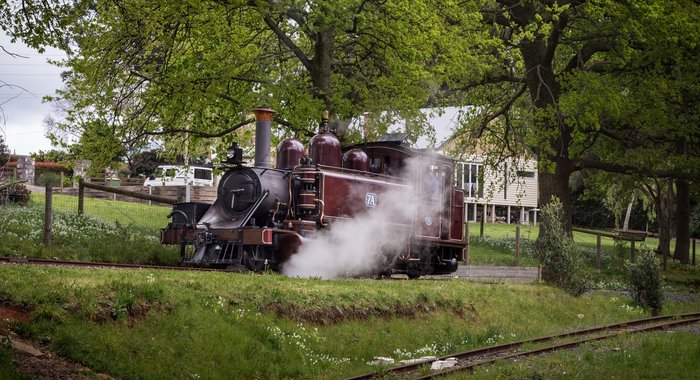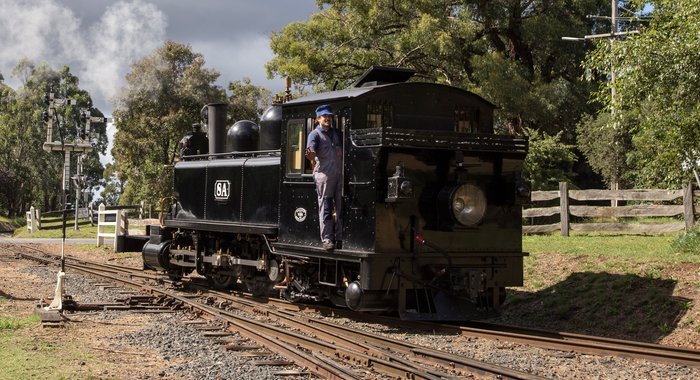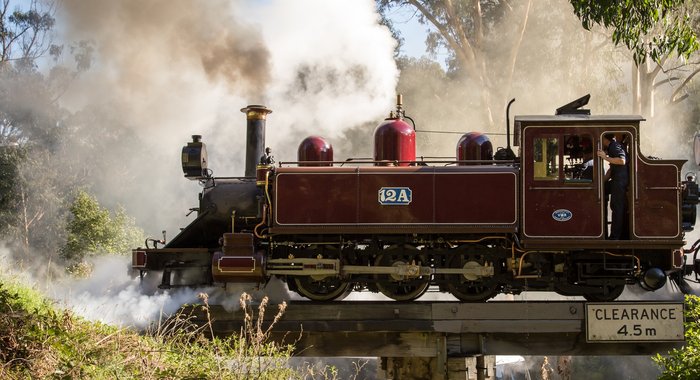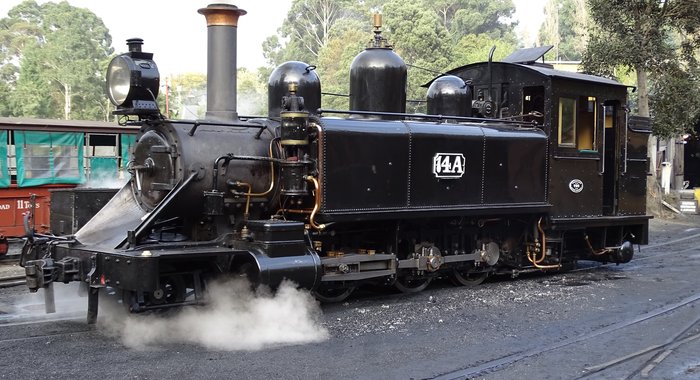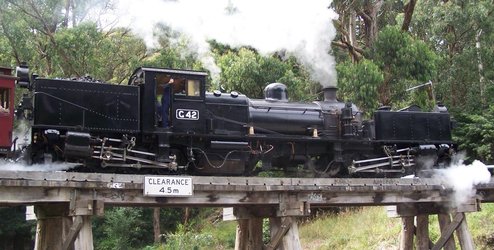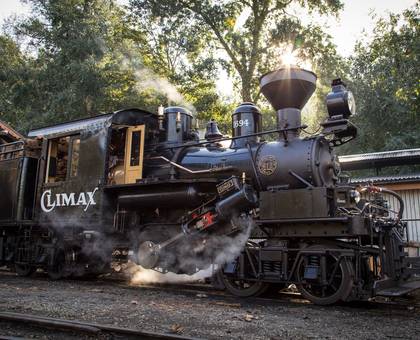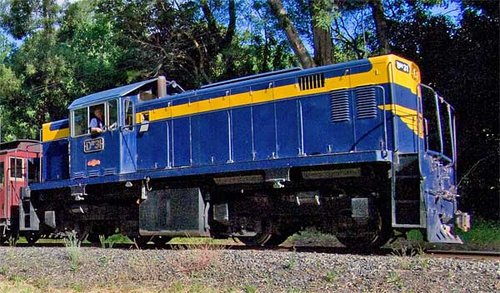Each locomotive operating on the Puffing Billy Railway has its own rich history and identity.
The NA locomotive is the only class to have operated on the Upper Fern Tree Gully to Gembrook railway prior to closure in 1954. In fact prior to 1978, they were the only locomotives to run on Puffing Billy Railway. Other locomotives now on the line are "foreign" to the Puffing Billy Railway, although G42, the Climax, and the Tractor Appliance Company Limited (T.A.C.L) can claim association through the Moe to Walhalla railway, where they operated alongside each other on a timber tramway that branched off at Collins Siding, near the township of Erica.
NA CLASS
The NA Class locomotives were originally referred to as ‘narrow gauge’. This was later abbreviated to NA Class.
Different community locations had nicknames for the NA Class locomotive during their working lives, those known are:-
- Wangaratta to Whitfield line: Polly or Old Polly
- Upper Ferntree Gully to Gembrook line: Hissin’ Jinnies
- Moe to Walhalla line: Coffee Pot
Some of these names were transferred to the other lines, possibly due to the transfer of staff. All the surviving NA Class locomotives have operated on all four of the Victorian Railways narrow gauge lines during their working careers. They were transferred from line to line as they were required. Only one loco (no longer in existence) stayed on the one line.
All the surviving NA Class locomotives were altered from chopper couplings to MCB auto couplings during the period between 1926 and 1929.
With the NA locos, Heritage policy calls for each of the historic colour schemes to be represented on the locos including the scheme adopted in the early years of preservation. Locos 1-2 were originally painted in the light ivy green with gold lining of the Baldwin Locomotive works; locos 3-6 in two-tone green with white lining, with 1 & 2 receiving that livery around 1903; locos 7-17 in Canadian Pacific red & dark brown with white lining, with 1-6 receiving that livery from late 1903 onwards; and finally, all NA’s were painted all-over black from about 1921. From around 1956, the preserved NA’s received red head-stocks, handrails and footplate valances. Heritage policy also states that locomotives should only be given colour schemes in which they had historically appeared in their working lifetime under V.R. operation. Where possible, each locomotive will also be restored to the physical configuration appropriate to the period represented by its colour scheme. A similar policy applies to some of the other locomotives as well.
Today, only six of the original seventeen NAs remain, the others having been cut up for scrap metal.
The following are the specific details for each of Puffing Billy’s NA Locomotives.
No. originally constructed: 17
No. in service: 5 (Nosa. 6, 7, 8, 12, 14)
No. stored: 1 (No. 3)
Boiler pressure: (lb/sq. in) 180
Boiler heating surface: 524 sq ft
Tractive effort (85%) : 12,170 lbs. (80%)
Driving wheel diameter: 36"
Max axle load: 9t 9c 2q
Length Overall: 30' 10"
Height Overall: 10' 10"
Date of manufacture: 1898-1915
Manufacturer: Baldwin (1-2) V.R. (3-17)
Place of manufacture: Philadelphia USA (1-2) Newport (3-17)
Locomotive Type: Prairie
Coal capacity: 30 cwt
Cylinder diameter: 13"
Cylinder stroke: 18"
Wheel arrangement: 2-6-2T
Roadworthy weight: 35 t
Water capacity: 780 gal
Other locomotives now on the line are “foreign” to the Puffing Billy Railway, although G42, the Climax and the T.A.C.L. can claim association through the Moe to Walhalla railway where G42 operated alongside the NA’s and the Climax and T.A.C.L. on a timber tramway that branched off at Collins Siding.
G Class
Traffic and train loadings on Victoria's narrow gauge railways reached their peak during the 1920s. To assist in handling the longer, heavier trains, the Victorian Railways ordered two larger, more powerful Beyer Garratt locomotives. These were delivered in 1926 and were numbered G41 and G42. They were sent to work on the Colac–Beech Forest–Crowes line and the Moe–Walhalla line respectively. After the line from Moe closed in 1953, G42 was sent to Colac, where it worked with its mate, G41, until closure of that line in mid-1962.
G41 had been in poor condition and was scrapped, whereas a brighter future awaited G42. The Victorian Railways offered G42 to the Puffing Billy Preservation Society, for display as a static exhibit in the Menzies Creek Museum. Over time, a plan evolved to restore G42 to operation, a goal that was eventually achieved by the launch of G42 back into traffic in 2004.
No. originally constructed: 2
No. in service: 1 (No. 42)
Boiler pressure: (lb/sq. in) 180
Boiler heating surface: 1268 sq ft (117.8 m2)
Tractive effort: (85%) 26,860 lbs (12.18 t)
Driving wheel diameter: 36" (91.44 cm)
Max axle load: 9t 5cwt
Length Overall: 51' 7" (15.72m)
Height Overall: 10' 8" (3.28m)
Date of manufacture: 1926
Manufacturer: Beyer Peacock
Place of manufacture: Manchester UK
Locomotive Type: Garratt
Coal capacity: 70 cwt
Cylinder diameter: 13" (33.02 cm)
Cylinder stroke: 18" (45.72 cm)
Wheel arrangement: 2-6-0+0-6-2
Roadworthy weight: 69t
Water capacity: 1680 gal (7,637.43 l)
